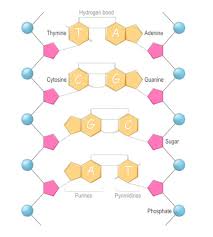
The Wonders of DNA
DNA, short for deoxyribonucleic acid, is a remarkable molecule that carries the genetic instructions for all living organisms. It serves as the blueprint for life, determining our physical traits, behaviors, and even our susceptibility to certain diseases.
Each cell in our body contains a complete set of DNA, organized into structures called chromosomes. These chromosomes are made up of genes, which are specific sequences of DNA that encode proteins and regulate various biological processes.
One of the most fascinating aspects of DNA is its ability to replicate itself with incredible accuracy. This process ensures that genetic information is passed down from one generation to the next, allowing for the continuity of life.
Advancements in science and technology have enabled us to unlock the secrets hidden within our DNA. Through techniques like DNA sequencing and genetic testing, we can now uncover valuable information about our ancestry, health risks, and even personalized treatment options for certain conditions.
Studying DNA has revolutionized fields such as medicine, forensics, and evolutionary biology. It has provided us with insights into human evolution, disease mechanisms, and the intricate web of life on Earth.
In conclusion, DNA is not just a molecule—it is a gateway to understanding ourselves and the world around us. Its significance stretches far beyond its microscopic structure, shaping our past, present, and future in ways we are only beginning to comprehend.
Unlocking the Secrets of Life: 7 Essential Insights into DNA
- DNA stands for deoxyribonucleic acid.
- DNA contains the genetic instructions for the development, functioning, growth, and reproduction of all known living organisms.
- The structure of DNA is a double helix, resembling a twisted ladder.
- Adenine pairs with thymine, and guanine pairs with cytosine in DNA strands.
- Mutations in DNA can lead to genetic disorders or variations in traits.
- DNA testing is commonly used in forensic science and paternity tests.
- Understanding DNA helps scientists study evolution, heredity, and diseases.
DNA stands for deoxyribonucleic acid.
DNA, short for deoxyribonucleic acid, is a fundamental molecule that carries the genetic instructions for all living organisms. This complex molecule plays a crucial role in determining our physical characteristics, behaviors, and overall biological makeup. Understanding the significance of DNA is essential in unraveling the mysteries of life and exploring the intricate mechanisms that govern our existence.
DNA contains the genetic instructions for the development, functioning, growth, and reproduction of all known living organisms.
DNA is the fundamental molecule that holds the genetic blueprint for life. Within its structure lie the intricate instructions necessary for the development, functioning, growth, and reproduction of every living organism known to science. This remarkable molecule not only shapes our physical traits but also governs the complex processes that sustain life itself. Understanding the role of DNA in orchestrating the diversity and unity of all living beings is key to unraveling the mysteries of existence and evolution.
The structure of DNA is a double helix, resembling a twisted ladder.
The structure of DNA is often likened to a double helix, resembling a twisted ladder. This iconic shape consists of two strands that wind around each other in a spiral formation, with the characteristic base pairs forming the rungs of the “ladder.” The double helix structure of DNA not only provides stability and protection for the genetic information it carries but also allows for the precise replication and transmission of this vital information during cell division and inheritance.
Adenine pairs with thymine, and guanine pairs with cytosine in DNA strands.
In the intricate world of DNA, the pairing of nucleotide bases is a fundamental concept that underpins the structure and function of this vital molecule. Adenine’s affinity for thymine and guanine’s bond with cytosine form the complementary base pairs that ensure the stability and fidelity of DNA strands. This elegant pairing mechanism not only facilitates the accurate replication of genetic information but also plays a crucial role in processes such as transcription and translation, highlighting the exquisite precision and complexity inherent in the molecular dance of life.
Mutations in DNA can lead to genetic disorders or variations in traits.
Mutations in DNA play a crucial role in shaping genetic diversity and can have significant consequences on an individual’s traits and health. These genetic alterations can result in the development of genetic disorders or lead to variations in physical characteristics, such as eye color or height. Understanding how mutations impact DNA is essential in unraveling the complexities of inherited conditions and exploring the intricacies of human genetics.
DNA testing is commonly used in forensic science and paternity tests.
DNA testing plays a crucial role in forensic science and paternity tests. In forensic investigations, DNA analysis helps identify suspects, link individuals to crime scenes, and exonerate the innocent. Paternity tests rely on DNA comparison between a child and potential parent to determine biological relationships with high accuracy. These applications of DNA testing have revolutionized the fields of law enforcement and family law, providing valuable evidence and clarity in determining identities and relationships.
Understanding DNA helps scientists study evolution, heredity, and diseases.
Understanding DNA is crucial for scientists as it allows them to delve into the realms of evolution, heredity, and diseases. By unraveling the genetic code stored within DNA, researchers can trace the intricate paths of evolution, uncover the mechanisms of heredity that pass traits from one generation to another, and identify genetic markers associated with various diseases. This knowledge not only enhances our understanding of the natural world but also opens up new avenues for advancements in medicine and biology.
